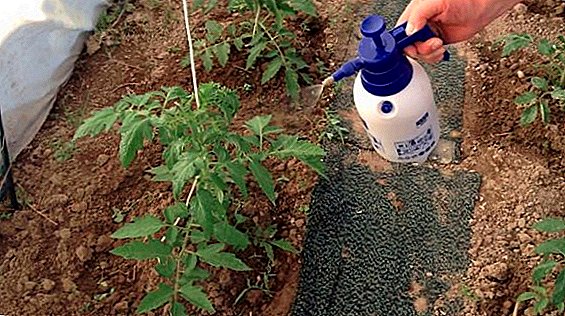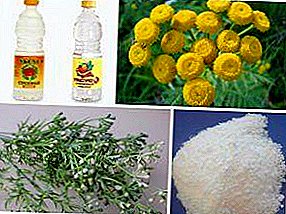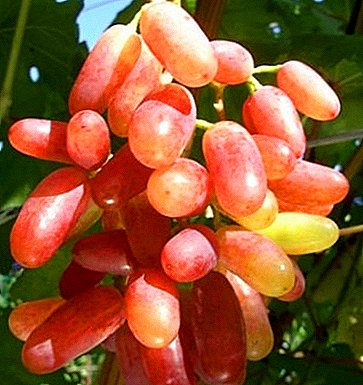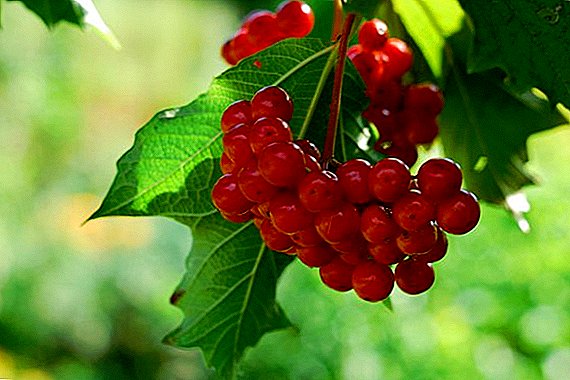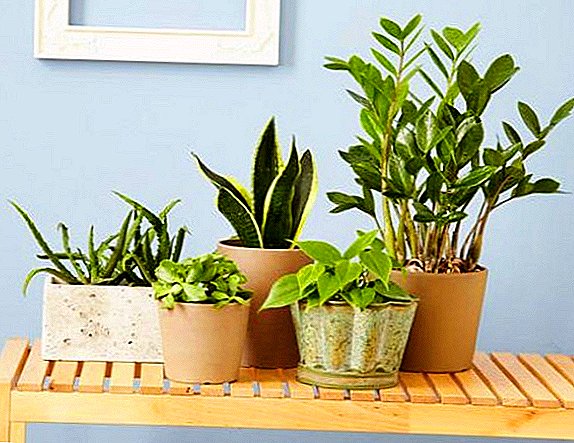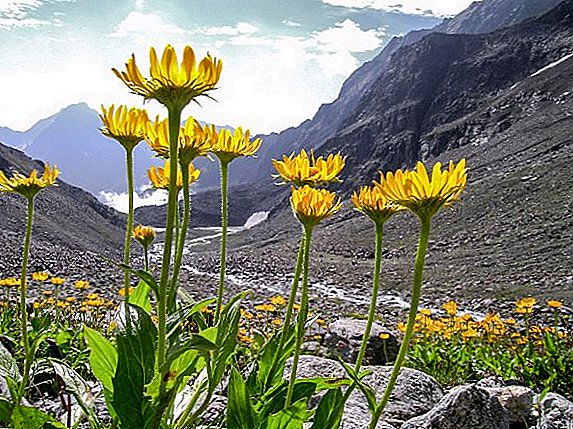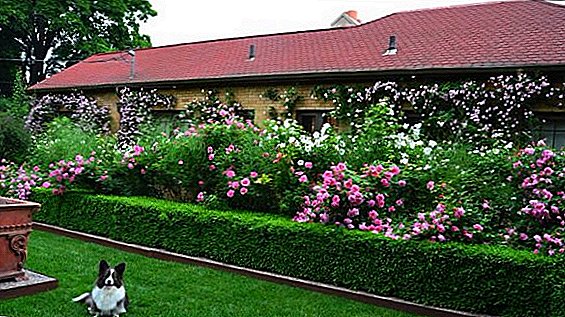 Each owner dreams of a beautiful fence around the house or site. But not everyone can afford to build a forged or stone fence. Therefore, people are looking for other, more budget and at the same time beautiful solutions. One such solution is the construction of a hedge.
Each owner dreams of a beautiful fence around the house or site. But not everyone can afford to build a forged or stone fence. Therefore, people are looking for other, more budget and at the same time beautiful solutions. One such solution is the construction of a hedge.
Trees and shrubs have not only decorative and fruitful functions, but also bring other practical benefits - play the role of a hedge. With their help, you can decorate the outbuildings, organize a corner for recreation, divide the garden into plots.
Hedges, the difficulty of choosing
The hedge can be natural (free growing) either coniferous or deciduous, barbed or soft, single-row, multi-row, combined or from shrubs of the same species. Much depends on the tasks that the hedge should perform, but after that the choice remains very wide.
 Plants for hedges need to choose correctly and properly plant them. There are some recommendations that should be considered when choosing a hedge.
Plants for hedges need to choose correctly and properly plant them. There are some recommendations that should be considered when choosing a hedge.
- For a hedge it is necessary to choose plants that grow well in this climatic zone;
- For shaded areas suitable shade-tolerant tree bushes. In well-lit areas, a lively fence is best suited for abundant flowering and well-growing plants;
- If the plans do not have a permanent shaping and cutting the hedge, the plants should be chosen with this calculation;
- Coniferous hedge will fill the air with healthy phytoncides and decorate the site;
- Coniferous and deciduous plants alternate alternately. But you need to be prepared that in the winter the foliage will fall, and the fence will be translucent;
- Evergreen hedge is best organized in the spring;
- A trellis hedge is the basis of a dense and at the same time light fence of the site;
- A hedge can play the role of not only fences and decorations, but also bear fruit. It all depends on the plants chosen for it: it can be currants, sea buckthorn, wild rose, and so on.
Tree, bush or trellis - most often chosen
Which plant to choose for a hedge, depends on what tasks will be assigned to it. The hedge can be located not only around the site, but also inside it. The most commonly used hedge plants are trees and bushes. Also there are trellis hedges, the formation of which takes more time.
 Trees are chosen as material for a hedge, if a high or medium height fence is required. For the formed high hedge, thawed western, Tartar maple, Berlin poplar, fine-leaved elm and others are planted. For the unformed hedge of trees, a Siberian apple tree, ordinary viburnum, Tatar and golden honeysuckle, common spruce, Canadian and others are suitable. The most interesting are fast-growing trees for a hedge.
Trees are chosen as material for a hedge, if a high or medium height fence is required. For the formed high hedge, thawed western, Tartar maple, Berlin poplar, fine-leaved elm and others are planted. For the unformed hedge of trees, a Siberian apple tree, ordinary viburnum, Tatar and golden honeysuckle, common spruce, Canadian and others are suitable. The most interesting are fast-growing trees for a hedge.
Shrubs are very popular for the formation of fences. They are used for landscaping, as a demarcation of zones of the site and, in fact, as a fence. Shrubs are ideal for the following purposes:
- the formation of zones on the site;
- curb along the tracks;
- focusing on areas;
- protection from prying eyes, dust;
- external and internal delimitation of the territory.
The most reliable is a trellis fence. For its formation, trees are planted, which are able to grow together with branches. Such trees include, for example, hornbeam and hawthorn. Selected trees are planted in several rows. Every year, trees are pruned, leaving strong shoots. These shoots from different trees are intertwined. Next, woven and accrete branches are regularly cut, with the help of which the desired height of the fence is formed.
 Different types of plants are used for various purposes. But still bushes are most often used to form hedges. The fact is that the trees are not so magnificently expanding. Shpalernye fence difficult to implement. It turns out that shrubs that require frequent pruning or freely growing, are the best option for the construction of a hedge.
Different types of plants are used for various purposes. But still bushes are most often used to form hedges. The fact is that the trees are not so magnificently expanding. Shpalernye fence difficult to implement. It turns out that shrubs that require frequent pruning or freely growing, are the best option for the construction of a hedge.
Which plants are suitable and which are not.
For growing hedges, some plants are more suitable than others. You need to choose plants that are well tolerated by the climatic conditions of the area and well take root in the soil. Mainly plants can be divided into deciduous and coniferous. The hedge is a fast-growing perennial evergreen - it is a hedge not only from coniferous plants, there are other types of deciduous plants that keep the crown all year round.
Did you know? If you plant plants with colorful foliage, the fence will always look interesting and festive.
The best types of hedges
For evergreen hedge fit plant mahonia. She has evergreen glossy leaves. Its flowers are fragrant and exude a pleasant aroma. Mahonia well tolerated frosts, even if they caught her in the flowering period. Suitable for hedges: Japanese Mahoniya, creeping, Vanera, Oregon grapes.
 Fast-growing conifers for hedges is a relative concept. Conifers are not fast-growing, but among them there are those that grow faster than others. For example, Weymouth pine, larch, false blue thyssolithus other. From conifers for hedge good thuja, juniper.
Fast-growing conifers for hedges is a relative concept. Conifers are not fast-growing, but among them there are those that grow faster than others. For example, Weymouth pine, larch, false blue thyssolithus other. From conifers for hedge good thuja, juniper.
Did you know? Many conifers do not tolerate radical haircuts. This is due to the fact that their old wood does not give new shoots.
Very popular hawthorn shrubs and barberry. They are not picky in care and grow quite quickly. On these shrubs appear not only juicy leaves in the season, but also berries.
To form a fence on the north side, suitable rhododendron. The plant does not like sunlight. In the first year of disembarkation, it needs regular watering, after which it needs minimal maintenance.
Good for hedge formation lilac, dog rose, cotoneaster, yellow acacia and many other plants.
Plants that are undesirable
There are plants that are not recommended for use as a hedge. These include those that grow in different directions, dig the soil. For example, this Raspberry bushes, shadberry, blackberry, mountain ash.
 Another criterion by which you can fold a shrub and not consider it for collection is susceptibility to attacks of diseases and pests. For example, viburnum.
Another criterion by which you can fold a shrub and not consider it for collection is susceptibility to attacks of diseases and pests. For example, viburnum.
Not winter-hardy perennials are also not suitable for hedge. Each year they will require replacement, which is not suitable for growing a live fence. Plants that need to be replanted periodically are also not suitable.
Device hedges how to land plants
When a fence is conceived, you need to think about how it should be in order to perform the tasks assigned to it. The area needs to mark and dig up grooves for planting. To the grooves were smooth, they can dig under the elongated cord. The depth of the grooves is from 40 cm to 60 cm. If a single-row hedge is foreseen, the groove under it should be up to 60 cm, if a two-row hedge is up to 1 m.
Plants are planted at a distance of 25 cm from each other in the case of single-row hedge. If the fence is two-row, the plants are planted in a square-nesting way at a distance of 50 cm from each other.
 Top soil, compost and peat fall asleep at the bottom of the ditch. Deciduous plants can be fertilized with manure, but conifers are not worth it.
Top soil, compost and peat fall asleep at the bottom of the ditch. Deciduous plants can be fertilized with manure, but conifers are not worth it.
The age of the planted species is 2-3 years for deciduous crops, 3-4 years for coniferous crops. When planting 1-2 cm is to leave the root neck on top of the soil.
To make the fence well formed, you need to stretch the supports along the rows at a height of 30-40 cm. After the plants take root, you need to remove the props.
Important! It is necessary to ensure the supply of food and good illumination of plants in the hedge. Otherwise, aesthetics will suffer, and the hedge will become rare.
How to grow a hedge, the rules of care
Even if you choose the fastest growing plants for hedges, you need to be prepared for the fact that a full formation will take at least 4 years.
If the hedge requires regular pruning, you need to stretch the string at the desired height and cut it. It is unlikely that it will work out for the eye, so for accuracy it is better to use such a measure. The fence is recommended to cut only in summer, in which case it does not bald from the bottom.
Important! If the lower part of the plant has become naked due to improper pruning and insufficient lighting, the bush must be given the appearance of a trapezium or a cone.
In order not to waste time and effort and not to cut the plants in the hedge, it is necessary to initially plan and select the suitable plants.
 Whatever plants are chosen for the hedge, it needs care anyway. Plants need to be watered, to monitor their health and free from dry twigs. Then such a fence will serve as protection from outsiders and please the eye.
Whatever plants are chosen for the hedge, it needs care anyway. Plants need to be watered, to monitor their health and free from dry twigs. Then such a fence will serve as protection from outsiders and please the eye.



